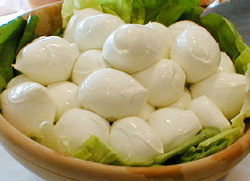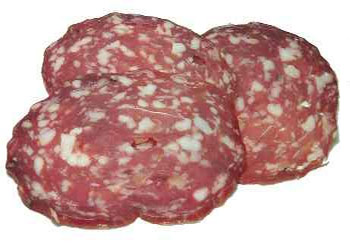
| :. Intro | ||
| :. Castelcivita grottoes | ||
| :. Castellabate | ||
|
||
|
||
|
||
|
||
| :. Paestum | ||
| :. Padula Charterhouse | ||
| :. Palinuro | ||
| :. Velia | ||
|
----
|
||
|
----
|
||
| :. Typical food products | ||
| :. Diving in Cilento | ||
| :. Public transportation | ||
| :. Maps | ||
| :. Email us |
|
The Campania Region is the home of the Mediterranean diet, with its excellent wines, the famous cheeses - among which stands out the cow buffalo milk mozzarella, the lemons, the San Marzano tomatoes, and the excellent extra-virgin olive oil. These are all strength points that are perfectly integrated in the prestigious food and gastronomic tradition that made Campania, and particularly the Cilento area, well known all over the world. I) Ancel Keys and the Mediterranean Diet The food products of the Cilento area have been made famous thanks to the studies that were accomplished in the 50’s by Ancel Keys, a famous American nutritionist, on the population of the Cilento area, where he noticed fewer cases of some pathologies, compared to the United States. This physician, after his return to the United States, became involved in a research project that lasted 20 years. The evaluation of 12.000 persons, between 40 and 60 years of age, residing in different countries, such as Japan, USA, The Netherlands, Yugoslavia, Finland and Italy, confirmed Keys’ hypothesis that, the more the diet of the subjects examined was drifting farther and farther away from the Mediterranean patterns, the higher the cases of the "wellbeing related diseases”. The success of the Mediterranean diet in the world as a matter of fact, really begun in the United States in the 70’s, when the USA truly highlighted the prevention of some pathologies, which are typical of the industrial society, that had splurged into the use of fats, carbohydrates, and proteins, and compared it with the diet that Keys had been studying in the Cilento area. A diet based on olive oil, fish, cereals, fruits and vegetables, as a matter of fact, can cause a lowering of cholesterol and prevents cardio-vascular diseases, and particularly atherosclerosis, hypertension, myocardial infarcts and hemorrhagic stroke.
|
|
|
|
II) The Cilento specialties The ancient recipes and the old flavors of the foods of the Cilento area are re-existing today in the local cooking, thanks to some traditions that were never abandoned. The wholesomeness of the products of this land is the characteristic of the Cilento area dishes, which have been often define as “poor”, due to the simplicity of the ingredients but knowledgeably combined by the typical art of the women of the Cilento area who had to struggle with an economy that, in most cases, was not granting enough raw matters for the daily support. a) The extra virgin olive oil All the products that are typical in the Mediterranean diet are found in the Cilento area, starting from the prince of products, the extra virgin olive oil. The cultivation of the olive tree has traditions that date back for thousands of years in the Campania region, making us think back to the ancient settlements of the first colonies of the Magna Grecia. It is an integrating part of history, of traditions, and culture of the Cilento area, and it often represents the characterizing element of the Cilento area landscape. The olive tree, spreading on most of the territory, still represents a valid alternative for production, especially in the hinterland with hills and difficult to cultivate areas. In the ancient Cilento, traveling through small towering villages, it is possible to visit old and modern oil mills, and to become familiar with the olive oil cycle. b) The mozzarella and other cheeses Among the typical products from this area we would like to invite you to taste the exquisite cow buffalo mozzarella, which is famous throughout Italy and all over the world, which has its major center for production in the outskirts of the Cilento area, near Paestum and Capaccio: dairies and farms are spread throughout the whole area, south of Battipaglia, and can be seen from the State Street SS18. Mozzarella is a fresh cheese, with the hand stretching process, obtained directly from cow buffalo’s whole milk. In some dairies, it is possible to stop and observe the production and the processing of the cow buffalo mozzarella. If you would like to try one of the best organically produced cow buffalo mozzarella, visit the “Vannulo” dairy (the Washington Post has dedicated an article to the Vannulo dairy, and the “Corriere della Sera”, indicates its organically produced mozzarella among one of the ten emotions in life that should not be missed... remember to make reservations!). Another well known fresh cheese which is typical of this area, is the Ricotta, which is manufactured with buttermilk brought to a temperature of 80/90 degrees (Celsius). Among the most popular cheeses is also the Caciocavallo, a cheese made with whole cows’ milk. It has a mild, slightly salty flavour and a firm, smooth texture when young (about 2 months) and becomes ideal for grating when it ages. Caciocavallo is one of the hand stretched types of cheeses (like Mozzarella), which means it has been stretched and shaped by hand. From the Cilento breed goats, a unique kind in difference, the Cacioricotta caprino del Cilento is produced. Among the most common traditional products of the central – southern part of Italy, we also find the Pecorino cheese, which can be fresh or aged. The whole cheese is initially produced with the same processing method used for the caprino cheese and can be eaten fresh, or placed to age for about three months and then rubbed with oil and vinegar to prolong the aging process for more than one year. c) The cold cuts and cured meats. Something that should not be missed is a taste of the local cold cuts. The local cuisine depended on a large extent on the animals that were bred by the families. In the past, every family used to breed animals in the backyard and while the best joints of meat were sold to bring some money home, the variety meats or edible scrap parts, not easily sold, were generally reserved to the family meals for simple but tasty recipes. The most traditional animal that is still found in the backyard of many families is the pig. Not even the tiniest part, bone or muscle of this animal goes to waste. The feed that goes to these animals is the most important principle for the quality of these products. The various kinds of cold meats and salami, as the same name defines in the Italian language, are products deriving from the salting process of the meats, the oldest and most common system of food preservation. The Soppressata Cilentana is absolutely the cold cut being the king of this type of processing. It is a very old product: and according to some written testimonies, it dates back at least to the XI century. Nowadays, its production is almost exclusively a family – type production. For this extraordinary cold cut, the most noble part of the pig are being used: prosciutto, filet, and everything is strictly cut with the tip of the blade of a knife and mixed with salt and whole and/or ground black pepper corns. The Capicollo (another cured and pressed pork meat) in other areas in Italy is also known as Coppa or Lonza, is produced with the muscle part of the neck, with systems which require the use of salt, pepper and wine. Pancetta, which can be rolled or flattened, derives from the belly of the pig and is cut in the shape of a large rectangle, cured with salt and spices which vary according to the areas where it is produced. Once it has been dried, it is rolled and tied so that it does not hold any air (rolled pancetta), or it is cured with spices, salted and protected by generous layers of hot pepper which protect it, with its antibiotic and disinfecting power, during the months of the aging process (flat pancetta). The Cotenna (pigskin) is used to add flavour to pasta when it is cooked with legumes and vegetables. Salsiccia derives from the use of the lean parts of the pig, which are better if cut by hand, and mixed with sweet or hot pepper and salt.
Bread is also excellent, and it can be made with durum wheat flour, soft wheat or whole wheat. The constant element that guarantees the high quality of bread is the daily production (no frozen dough is used), and the natural leavening of the product, which is also combined with the baking, often done in wood burning ovens. The production of excellent wheat and also corn is used in the manufacturing of excellent bread – based cookies (dried bread also called “freselle” or “taralli”) which can be eaten, after wetting them quickly with water and then spreading some salt and oil on them: this is the famous acquasale, (literally water-salt) a very poor dish from the old Cilento, typical food of the local fishermen, which can still be eaten today, often accompanied by some excellent small tomato grown on the hills, by flavorful oregano,- which grows spontaneously in these areas – and by some salted anchovy. e) The fusilli pasta Among the typical food products of the Cilento area, we are highlighting pasta, which is the fruit of the production of an excellent durum wheat Particularly, we are advising you to try the fusilli, a strictly home - made pasta, with a special iron tool, like they used to make it many years ago during holydays. The fusillo is a hand-made pasta, a sort of large spaghetti shaped like a spring. Fusillo should be tasted with an excellent meat sauce, possibly made with mutton or with the typical “braciole” (rolled veal or pork meat). f) and other delicatessen Among one of the most delicious products from the fields, we have the wild asparagus also used to flavor pasta, or in an omelette, together with onions. The figs, typical fruit of the area, are sweet and sugary and are eaten fresh during the Summer season, while they are dried in the oven and stuffed with small pieces of walnuts or almonds and dipped into melted chocolate for the winter. At last, but not least, we should not forget about fish; it is always fresh and cooked in many different ways, but above all it is grilled or served in delicious fish soups. |


